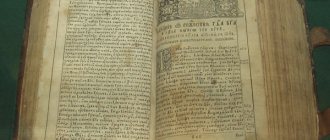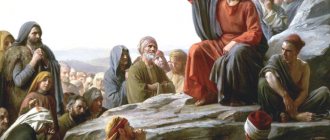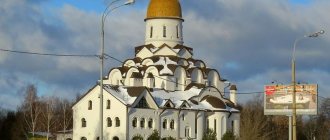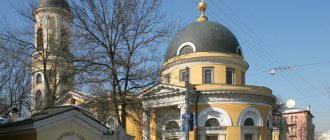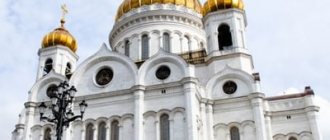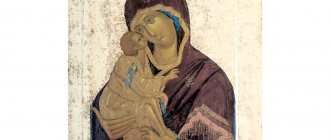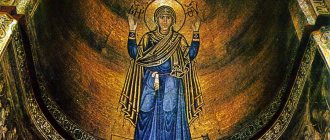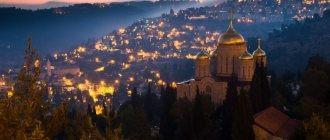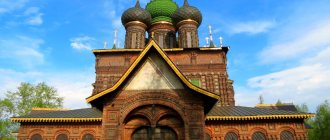In Russian history, the Cossacks are a unique phenomenon. This is a society that became one of the reasons that allowed the Russian Empire to grow to such enormous proportions, and most importantly, to secure new lands, turning them into full-fledged components of one great country.
There are so many hypotheses about the term “Cossacks” that it becomes clear that its origin is unknown, and it is useless to argue about it without the emergence of new data. Another debate that Cossack researchers are having is whether they are a separate ethnic group or part of the Russian people? Speculation on this topic is beneficial to Russia’s enemies, who dream of its dismemberment into many small states, and therefore is constantly fed from the outside.
History of the emergence and spread of the Cossacks
In the post-perestroika years, the country was flooded with translations of foreign children's literature, and in American children's books on geography, Russians were surprised to discover that on maps of Russia there was a huge region - Cossackia. There lived a “special people” - the Cossacks.
They themselves, in the overwhelming majority, consider themselves the most “correct” Russians and the most ardent defenders of Orthodoxy, and the history of Russia is the best confirmation of this.
They were first mentioned in the chronicles of the 14th century. It is reported that in Sugdey, present-day Sudak, a certain Almalchu died, stabbed to death by the Cossacks. Then Sudak was the center of the slave trade of the Northern Black Sea region, and if not for the Zaporozhye Cossacks, much more captured Slavs, Circassians, and Greeks would have ended up there.
Also in the chronicle of 1444, “The Tale of Mustafa Tsarevich,” the Ryazan Cossacks are mentioned, who fought with the Ryazanians and Muscovites against this Tatar prince. In this case, they are positioned as guards of either the city of Ryazan, or the borders of the Ryazan principality, and came to the aid of the princely squad.
That is, already the first sources show the duality of the Cossacks. This term was used to describe, firstly, free peoples who settled on the outskirts of Russian lands, and secondly, service people, both city guards and border troops.
Creation of the Zaporozhye Sich
For the first time, representatives of quality tried to organize themselves in 1552 under the leadership of the Volyn prince Vishnevetsky, better known as Baida.
At his own expense, the man organized a military base called the Zaporozhye Sich. It was located on the small island of Khortitsa. It was here that the life of the free Cossacks took place. The location was chosen ideally, since the base blocked the Tatars’ road to Crimea and was located not far from the Polish border.
Also, the unique location of the Sich significantly complicated attempts to storm the fortress. The settlement did not last long; in 1557 it was destroyed. However, until 1775, all military bases were built in a similar way, on river islands.
Free Cossacks led by atamans
Who explored the southern outskirts of Rus'? These are hunters and runaway peasants, people who were looking for a better life and fleeing hunger, as well as those who were at odds with the law. They were joined by all the foreigners who also could not sit in one place, and perhaps by the remnants of those peoples who inhabited this territory - the Khazars, Scythians, Huns.
Having formed squads and chosen atamans, they fought, either for or against those with whom they neighbored. Gradually the Zaporozhye Sich was formed. Its whole history is participation in all wars in the region, constant uprisings, concluding treaties with neighbors and breaking them. The faith of the Cossacks of this region was a strange mixture of Christianity and paganism. They were Orthodox and, at the same time, extremely superstitious - they believed in sorcerers (who were highly respected), omens, the evil eye, etc.
They were calmed down (and not immediately) by the heavy hand of the Russian Empire, which already in the 19th century formed the Azov Cossack Army from the Cossacks, which mainly guarded the Caucasian coast, and managed to show itself in the Crimean War, where the plastuns - scouts of their troops showed amazing dexterity and prowess .
Few people now remember about plastuns, but comfortable and sharp plastun knives are still popular.
In 1860, the resettlement of the Cossacks to the Kuban began, where, after joining with other Cossack regiments, the Kuban Cossack Army was created from them. Another free army, the Don Army, was formed in approximately the same way. It was first mentioned in a complaint sent to Tsar Ivan the Terrible by the Nogai prince Yusuf, outraged by the fact that the Don people “did the cities” and his people were “guarded, taken away, beaten to death.”
People who, for various reasons, fled to the outskirts of the country, gathered into bands, elected atamans and lived as best they could - by hunting, robberies, raids and serving their neighbors when the next war happened. This brought them closer to the Cossacks - they went on hikes together, even on sea trips.
But the participation of the Cossacks in popular uprisings forced the Russian tsars to begin establishing order in their territories. Peter I included this region into the Russian Empire, forced its inhabitants to serve in the tsarist army, and ordered the construction of a number of fortresses on the Don.
How did the Cossacks appear in Rus'?
There are several versions of the appearance of a proud people, each of them has the right to life:
- The Cossacks are representatives of the eastern tribes (Khazars, Circassians) who settled on the territory of Rus';
- The first traces of nationality can be traced in the history of the Turkic empires, until the birth of Slavic culture. A number of scientists provide a compelling argument as to the reliability of this theory: there are practically no differences between the word “Cossack” and kazakh. And they mean the same thing - “free nomad”;
- There is also a version that the Cossacks are representatives of the fugitive Slavs who settled the empty steppe territory in the Azov and Black Sea regions. This happened around the fifteenth century. In the annals of Rus' about the Cossacks, regular notes began to appear in the forties of the fifteenth century. There is still no exact answer to the question of how this ethnic group originated.
Attraction to government service
Apparently, almost simultaneously with the free Cossacks, Cossacks appeared in Rus' and the Polish-Lithuanian Commonwealth as a branch of the army. Often these were the same free Cossacks, who at first simply fought as mercenaries, guarding borders and embassies for pay. Gradually they turned into a separate class that performed the same functions.
The history of the Russian Cossacks is eventful and extremely complicated, but in short - first Rus', then the Russian Empire expanded its borders almost throughout its history. Sometimes for the sake of land and hunting grounds, sometimes for self-defense, as in the case of the Crimea and the Caucasus, but Cossacks were always among the selected troops and they settled on the conquered lands. Or at first they settled on free lands, and then the king brought them to obedience.
They built villages, cultivated the land, defended territories from neighbors who did not want to live peacefully or from aborigines who were dissatisfied with the annexation. They lived peacefully with the peaceful ones, partially adopting their customs, traditions, clothing, language, cuisine and music. This led to the fact that the clothes of the Cossacks of different regions of Russia are seriously different, and the dialect, customs and songs are also different.
The most striking example of this is the Cossacks of the Kuban and Terek, who quite quickly adopted from the peoples of the Caucasus such elements of highlander clothing as a hat, a Circassian coat, and a burka. Their music and songs also acquired Caucasian motifs, for example, the Cossack Lezginka, very similar to the mountain one. This is how a unique cultural phenomenon arose, which anyone can get acquainted with by attending a concert of the Kuban Cossack Choir.
Name
There are many hypotheses regarding the origin of the name “Cossacks”. One of the most common versions indicates that the word is related to the Turkic definition of “free man.” It is possible that it was this definition that became the basis for naming the Cossacks. These people really valued freedom most of all, for which they left their native lands and created new settlements and, accordingly, a new culture.
N. Karazin “Cossacks in the Kirghiz-Kaisat Horde”
The name first appears in a Mamluk-Arabic dictionary, which historians believe was used in Egypt. However, some linguists correlate the word “gazak” indicated there with another definition - “restless.” As you understand, there is also some truth in this, because initially the Cossacks were fugitives who were looking for truth and freedom far from their homeland.
The dictionary by V. I. Dahl gives the following indication of the origin of the name:
“Cossack - probably from the Central Asian kazmak, to wander, to wander, like a haiduk, haidamak, from a guide; uskok from jump off, run; tramp from wandering, etc.”
Ancient Ukrainian painting with the Cossack Mamai
The largest Cossack troops in Russia
By the end of the 17th century, the Cossacks in Russia gradually began to transform into those associations that forced the whole world to consider them the elite of the Russian army. The process ended in the 19th century, and the entire system was brought to an end by the Great October Revolution and the subsequent Civil War.
During that period the following stood out:
- Don Cossacks.
How they appeared is described above, and their sovereign service began in 1671, after the oath of allegiance to Tsar Alexei Mikhailovich. But only Peter the Great transformed them completely, prohibited the choice of atamans, and introduced his own hierarchy.
As a result, the Russian Empire received, although at first not very disciplined, but at least a brave and experienced army, which was mainly used to guard the southern and eastern border of the country.
- Khopersky.
These inhabitants of the upper reaches of the Don were mentioned back in the days of the Golden Horde, and were immediately positioned as “Cossacks”. Unlike the free people who lived lower along the Don, they were excellent business executives - they had well-functioning self-government, built fortresses, shipyards, raised livestock, and plowed the land.
Joining the Russian Empire was quite painful - the Khopers managed to take part in uprisings. They were subjected to repression and reorganization, and were part of the Don and Astrakhan troops. In the spring of 1786, they strengthened the Caucasian line, forcibly relocating them to the Caucasus. At the same time they were replenished with baptized Persians and Kalmyks, of whom 145 families were assigned to them. But this is already the history of the Kuban Cossacks.
It is interesting that more than once they were joined by representatives of other nationalities. After the Patriotic War of 1812, thousands of French former prisoners of war who accepted Russian citizenship were assigned to the Orenburg Cossack Army. And the Poles from Napoleon’s army became Siberian Cossacks, as only the Polish surnames of their descendants now remind us of.
- Khlynovskys.
Founded by Novgorodians back in the 10th century, the city of Khlynov on the Vyatka River gradually became a developed center of a large region. The distance from the capital allowed the Vyatichi to create their own self-government, and by the 15th century they began to seriously annoy all their neighbors. Ivan III stopped this free movement, defeating them and annexing these lands to Rus'.
The leaders were executed, the nobility were resettled in towns near Moscow, the rest were assigned to serfs. A considerable part of them with their families managed to leave on ships - to the Northern Dvina, to the Volga, to the Upper Kama and Chusovaya. Later, the Stroganov merchants hired their troops to protect their Ural estates, as well as to conquer Siberian lands.
- Meshcherskys.
These are the only Cossacks who were not originally of Slavic origin. Their lands - Meshchera Ukraine, located between the Oka, Meshchera and Tsna, were inhabited by Finno-Ugric tribes mixed with the Turks - Polovtsy and Berendeys. Their main activities are cattle breeding and robbery (Cossacking) of neighbors and merchants.
In the 14th century, they already served the Russian tsars - guarding embassies sent to Crimea, Turkey and Siberia. At the end of the 15th century they were mentioned as a military class that participated in campaigns against Azov and Kazan, guarding the borders of Rus' from the Nagais and Kalmyks. For supporting impostors during the Time of Troubles, the Meshcheryaks were expelled from the country. Some chose Lithuania, others settled in the Kostroma region and then participated in the formation of the Orenburg and Bashkir-Meshcheryak Cossack troops.
- Seversky.
These are the descendants of the northerners - one of the East Slavic tribes. In the XIV-XV centuries they had self-government of the Zaporozhye type and were often subject to raids by their restless neighbors - the Horde. The battle-hardened stellate sturgeons were gladly taken into service by the Moscow and Lithuanian princes.
The beginning of their end was also marked by the Time of Troubles - for participation in the Bolotnikov uprising. The lands of the Seversky Cossacks were colonized by Moscow, and in 1619 they were generally divided between it and the Polish-Lithuanian Commonwealth. Most of the stellate sturgeons became peasants; some moved to the Zaporozhye or Don lands.
- Volzhskie.
These are the same Khlynovites who, having settled in the Zhiguli Mountains, were robbers on the Volga. The Moscow tsars were unable to calm them down, which, however, did not prevent them from using their services. A native of these places, Ermak, with his army, conquered Siberia for Russia in the 16th century; in the 17th century, the entire Volga army defended it from the Kalmyk Horde.
They helped the Donets and Cossacks fight the Turks, then served in the Caucasus, preventing the Chechens, Circassians, Kabardians, Turks and Persians from raiding Russian territories. During the reign of Peter I they took part in all his campaigns. At the beginning of the 18th century, he ordered them to be rewritten and formed into one army - the Volga.
- Kuban.
After the Russian-Turkish War, the need arose to populate new lands and, at the same time, find a use for the Cossacks - violent and poorly governed subjects of the Russian Empire. They were granted Taman and its surroundings, and they themselves received the name - the Black Sea Cossack Army.
Then, after long negotiations, Kuban was given to them. It was an impressive resettlement of the Cossacks - about 25 thousand people moved to their new homeland, began creating a defensive line and managing the new lands.
Now the monument to the Cossacks - the founders of the Kuban land, erected in the Krasnodar Territory, reminds us of this. Reorganization to general standards, changing the uniform to the clothes of the highlanders, as well as replenishment of Cossack regiments from other regions of the country and simply peasants and retired soldiers led to the creation of a completely new community.
Decossackization during the Russian Empire
After the uprising for freedom in the seventeenth century ended in defeat, unrest began and the military power of the Cossacks was significantly undermined. Also, the free people lost the support of the Russian Empire after they switched to the Swedish side in the battle of Poltava. The Cossack army in that battle was led by Ivan Mazepa.
| As a result of a series of unfortunate events in the eighteenth century, the process of decossackization was activated; it reached its peak during the reign of Catherine the Second. In 1775, the Zaporozhye Sich was liquidated. |
The Cossacks were faced with a choice: to lead a peasant lifestyle or join the hussars and dragoon regiments. Many chose to go with the second option.
However, a significant part of the Cossacks (approximately twelve thousand people) refused the Empire’s offer. To preserve the integrity of the borders of the state and somehow legitimize the remnants of the Cossack troops, by the decision of Alexander Suvorov, the Black Sea detachment was formed in 1790, which included those who abandoned life as peasants or hussars.
Role and place in the history of the country
From the above historically established communities, by the beginning of the 20th century the following Cossack troops were formed:
- Amurskoe.
- Astrakhan.
- Donskoe.
- Transbaikal.
- Kuban.
- Orenburg.
- Semirechenskoe.
- Siberian.
- Terskoe.
- Ural.
- Ussuriysk.
In total, by that time there were almost 3 million of them (with their families), which is a little more than 2% of the country’s population. At the same time, they participated in all more or less important events in the country - in protecting borders and important persons, military campaigns and accompanying scientific expeditions, in pacifying popular unrest and national pogroms.
They proved themselves to be real heroes during the First World War and, according to some historians, they stained themselves with the Lena execution. After the revolution, some of them joined the White Guard movement, while others enthusiastically accepted the power of the Bolsheviks.
Probably, not a single historical document will be able to retell as accurately and poignantly what was going on among the Cossacks then, as the writer Mikhail Sholokhov was able to do in his works.
Unfortunately, the troubles of this class did not stop there - the new government began to consistently pursue a policy of decossackization, taking away their privileges and repressing those who dared to object. The merger into collective farms also could not be called smooth.
In the Great Patriotic War, the Cossack cavalry and Plastun divisions, which were returned to their traditional uniform, showed good training, military ingenuity, courage and real heroism. Seven cavalry corps and 17 cavalry divisions were awarded guards ranks. Many people from the Cossack class served in other units, including as volunteers. In just four years of war, 262 cavalrymen were awarded the title of Hero of the Soviet Union.
Cossacks are heroes of the Second World War, they are General D. Karbyshev, Admiral A. Golovko, General M. Popov, tank ace D. Lavrinenko, weapons designer F. Tokarev and others, known throughout the country.
A considerable part of those who previously fought against Soviet power, having seen the misfortune that threatened their homeland, leaving political views aside, took part in World War II on the side of the USSR. However, there were also those who sided with the fascists in the hope that they would overthrow the communists and return Russia to its previous path.
Cossack uprisings for religious-national independence
From 1583 to 1657, some representatives of the free people rebelled in order to throw off the “shackles” of the Polish-Lithuanian Commonwealth and other states that attempted to subjugate the Cossacks.
The maximum desire for freedom manifested itself among the people after 1620, when Hetman Sagaidachny, who led the Zaporozhye army, entered the territory of the Kyiv Brotherhood. Such an act became a kind of symbol of the cohesion of Cossack traditions and Orthodoxy.
From that time on, the uprisings of the Cossacks were not only of a liberation nature, but also contained a religious background. Tension grew steadily between Poland and the free people, which led to the famous war led by Bohdan Khmelnytsky.
Bloody battles lasted from 1648 to 1654. It is also worth noting a number of smaller, but significant uprisings, or more precisely: a rebellion led by Nalivaiko, Pavlyuk and other historical figures. Return to contents
Mentality, culture and traditions
The Cossacks are a warlike, capricious and proud people (often excessively), which is why they always had friction with neighbors and fellow countrymen who did not belong to their class. But these qualities are needed in battle, and therefore were welcomed within the communities. The women, who supported the entire household, also had a strong character, since most of the time the men were busy with war.
The Cossack language, based on Russian, acquired its own characteristics associated both with the history of the Cossack troops and with borrowings from the languages of their neighbors. For example, the Kuban Balachka (dialect) is similar to the southeastern Ukrainian Surzhik, the Don Balachka is closer to the southern Russian dialects.
Checkers and sabers were considered to be the main weapons of the Cossacks, although this is not entirely true. Yes, the Kuban people carried checkers, especially Circassian ones, but the Black Sea people preferred firearms. In addition to the main means of protection, everyone carried a knife or dagger.
Some kind of uniformity in weapons appeared only in the second half of the 19th century. Before this, everyone chose themselves and, judging by the surviving descriptions, the weapons looked very picturesque. It was the honor of the Cossack, so it was always in perfect condition, in an excellent sheath, often richly decorated.
The rituals of the Cossacks, in general, coincide with all-Russian ones, but they also have their own specifics caused by their way of life. For example, at a funeral a war horse was led behind the coffin of the deceased, followed by relatives. In the widow's house, under the icons lay her husband's hat.
Special rituals accompanied the seeing off of men to war and their meeting; their observance was taken very seriously. But the most magnificent, complex and joyful event was the wedding of the Cossacks. The action was multi-step - bridesmaid, matchmaking, celebration in the bride's house, wedding, celebration in the groom's house.
And all this to the accompaniment of special songs and in the best outfits. The man's costume necessarily included weapons, the women wore bright clothes and, which was unacceptable for peasant women, had their heads uncovered. The scarf only covered the knot of hair at the back of her head.
Now Cossacks live in many regions of Russia, unite in various communities, actively participate in the life of the country, and in places where they live compactly, children are optionally taught the history of the Cossacks. Textbooks, photos and videos introduce young people to customs and remind them that their ancestors from generation to generation gave their lives for the glory of the Tsar and the Fatherland.
First leaders
Almost nothing is known about the first Cossack leaders. Only the names of Lithuanian border elders and governors appear in chronicles and documents. It is difficult to say what role they played in the formation of the Cossacks. We can only say with certainty that they were not exclusively Cossack leaders, but often used Cossacks in the fight against the Crimean Tatars or in other profitable matters.
One of the first border administrators whose name was associated with the Cossacks was the Kiev governor Yuri Pats - it was his people who robbed Moscow merchants. It is unknown whether the voivode received any part of the booty.
Perhaps the raid on the caravan happened even without his knowledge. Some names of the participants in this action have been preserved: Bogdan, Golubets, Vasko Zhila. More famous is Patz's contemporary, the Cherkassy governor, Prince Bogdan Glinsky.
In 1493, he made a trip to the lower reaches of the Dnieper (“to the Bottom”) and plundered the Ochakov fortress, recently founded by the Tatars. Khan Mengli-Girey, in correspondence with the Moscow Tsar, reported that the basis of Glinsky’s army were “Cherkasy Cossacks.” “30 thousand altyns” became their prey, and of the 64 khan’s people who were in the fortress, some were cut down and some were taken prisoner.
Mikhail Grushevsky admitted that a number of Cossack campaigns in the steppe in the late 1480s - the first half of the 1490s were directly related to the activities of B. Glinsky, but it is impossible to confirm this fact in our time.
Cossacks on vacation. Artist Ludwig Goedlek.
© steemit.com
Documents indicate that among the soldiers who were in the service of Prince Dmitry Putyatich, Patz’s successor as Kiev governor, Cossacks were already officially listed. It was from them that during a search conducted by the Cherkassy elder Semyon (Senko) Polozovich at the request of the Grand Duke of Lithuania Alexander, they found looted Tatar goods. Polozovich is perhaps the first real contender for the title of “organizer of the Ukrainian Cossacks.”
Martin Belsky called him “Snake Rusak, glorious Cossack.” In 1508 and 1511, S. Polozovich defeated the Tatars. He was probably a participant in several steppe campaigns, and it is no coincidence that when the authorities of the Grand Duchy of Lithuania first thought about accepting Cossacks into the official border service, the issue was entrusted to Semyon Polozovich. It was planned to recruit from 1,000 to 2,000 Cossacks. Together with the Chernobyl elder Kryshtof Kmitich, in 1524 Polozovich recruited Cossacks, with whom he made a campaign near Tavan and controlled the crossing of the Dnieper for a week.
At that time, the Tatar army was returning from a raid on Polish lands and found itself in a strange situation: they had almost returned home, but they could not get into the house. If the troops gathered by King Sigismund to repel the Tatars had followed them into the steppe, they would have been unable to avoid a pogrom. However, not having caught up with the enemy within the crown lands, the gentry turned home. The Cossacks, having demonstrated their strength, went to the Ukrainian border.
Upon returning from the campaign, Polozovich proposed placing the recruited Cossacks in small garrisons along the border for defense against the Tatars. However, the project had to be curtailed due to lack of money. The Cossacks said goodbye to plans for public service for a while. The idea was already in the air, but its implementation will involve completely different people.
